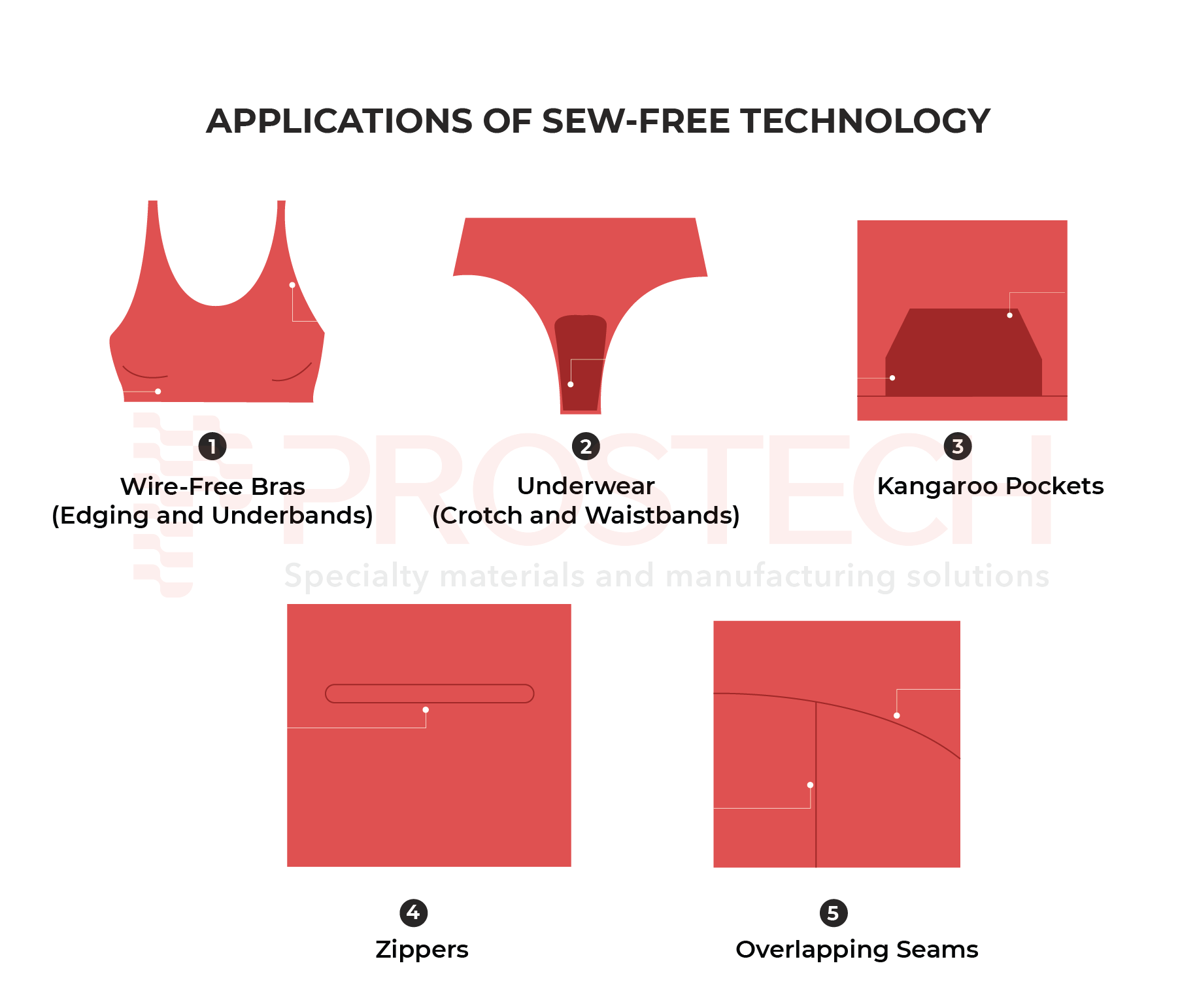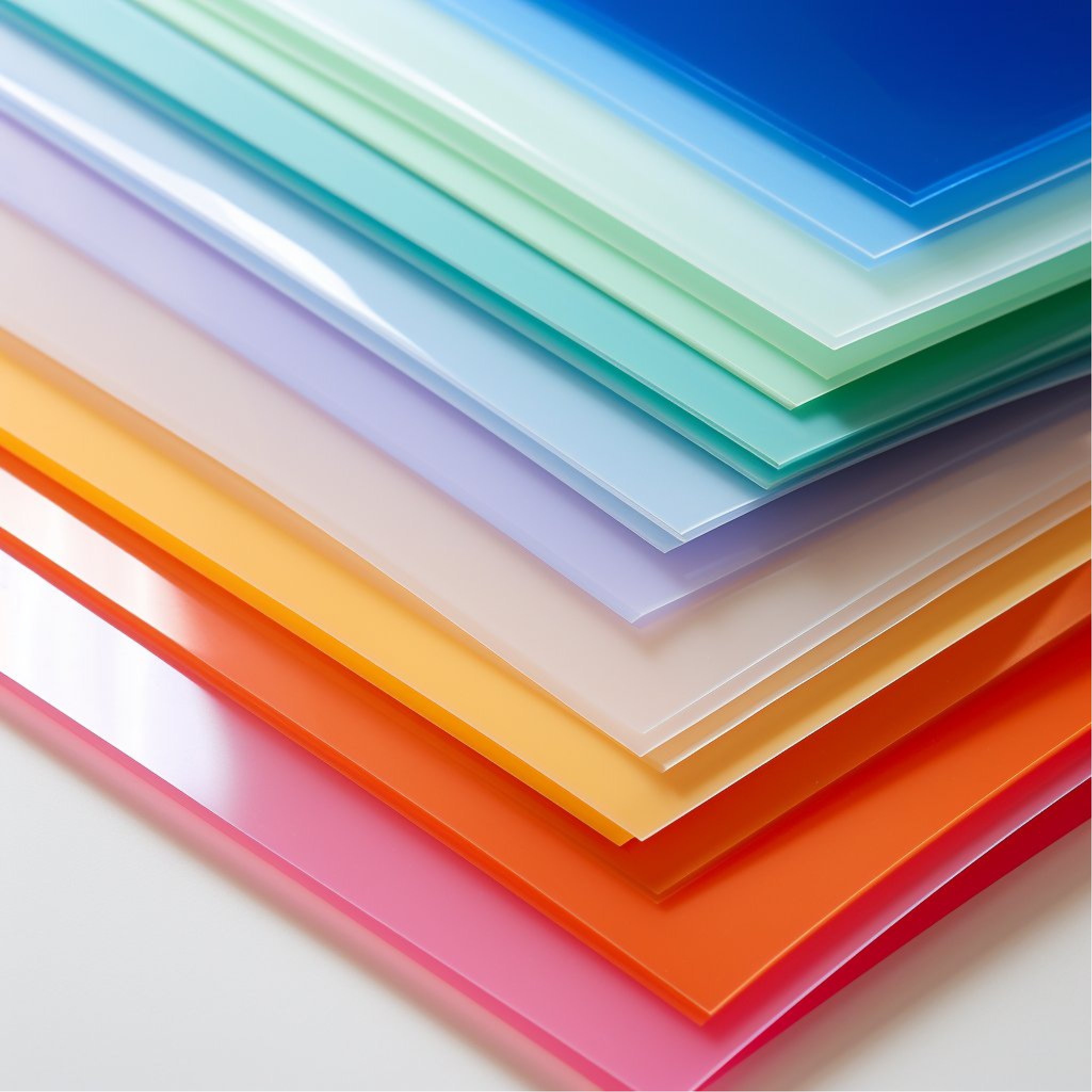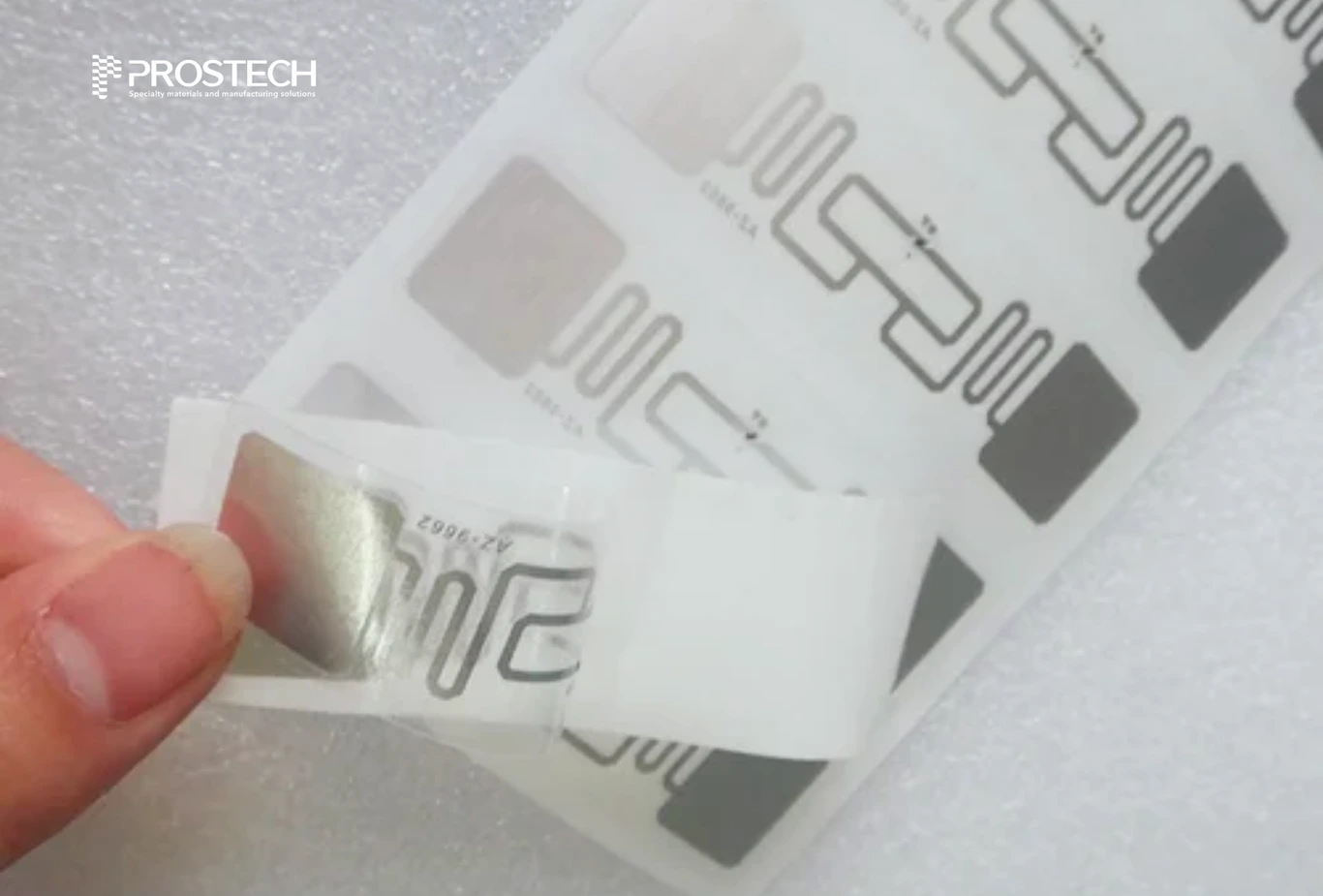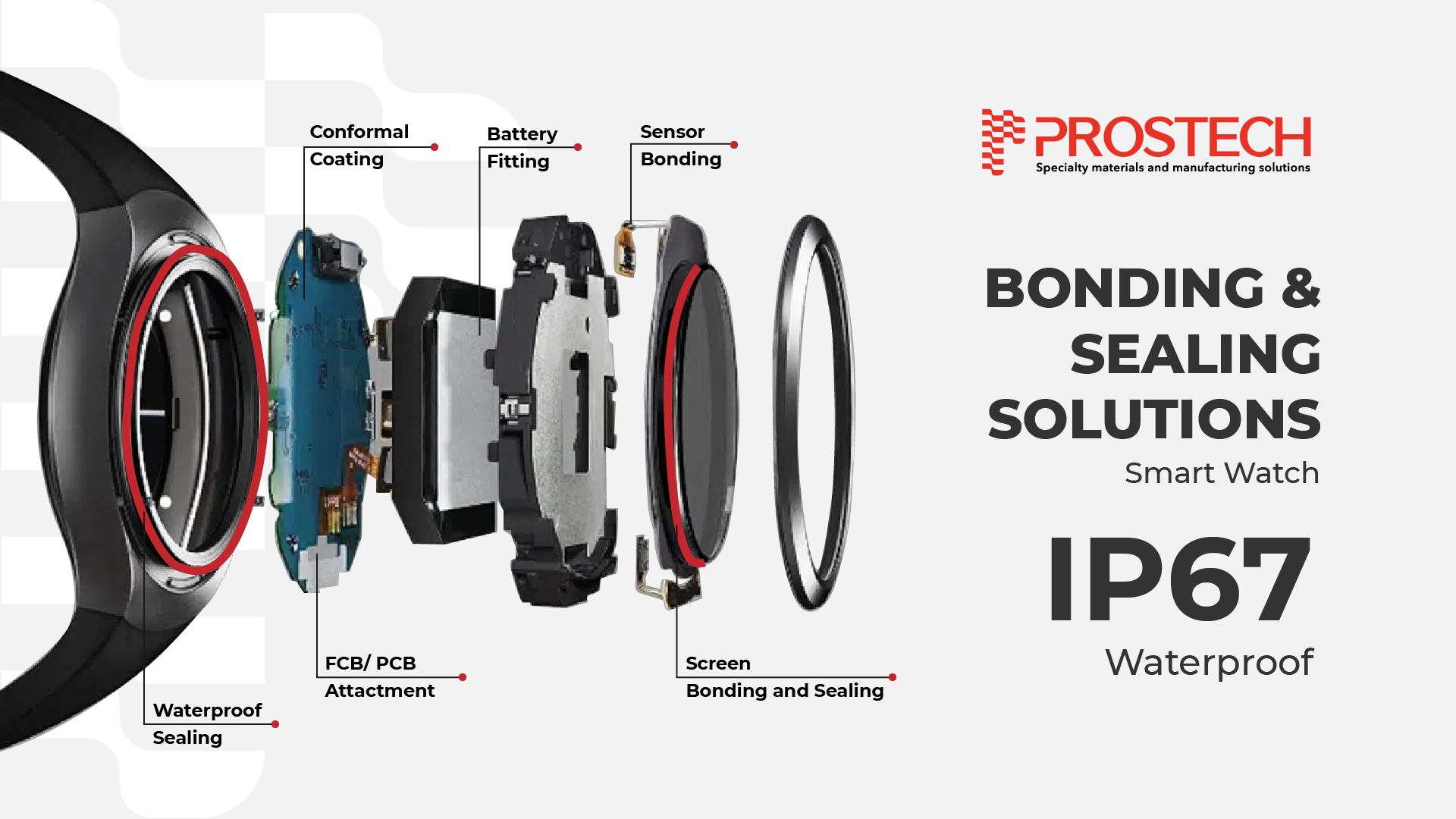The modern garment industry is undergoing a significant transformation with innovative and advanced clothing designs. However, this also means that manufacturers are facing increasing pressure regarding production speed, costs, and product quality. While traditional sewing methods still play a vital role, the wave of sew-free technology is gradually spreading, bringing efficiency, comfort, and a new style to designs. New technologies using adhesive bonding are becoming a main trend, revolutionizing how garments are produced and meeting the growing demands of consumers. In this article, let’s explore the benefits of sew-free technology and discover application solutions for clothing manufacturers.
Traditional Sewing Method
While traditional sewing method often results in high durability and low stiffness, making it suitable for many standard garment manufacturing processes, this method also has some notable drawbacks:
- Non-continuous joints create perforated seams, affecting the aesthetics and durability of the product.
- Sewing threads can deteriorate over time, especially when exposed to significant impact or frequent washing.
- Thickening of materials at the joints, making it challenging to design lightweight products.
- Limitations in production speed, often requiring multiple steps and time.
- Potential errors during the sewing process, leading to inconsistencies between products.
These drawbacks have driven the development of innovative alternative processes, such as adhesive bonding and other sew-free techniques. So why is sew-free technology rapidly gaining traction in the apparel market?
Features and Benefits of Sew-Free Technology
Instead of using needles and thread to stitch fabric layers together, this technology completely eliminates needle holes in the product by using adhesive or thermal bonding to connect the fabric layers. This not only overcomes the limitations of traditional stitching methods but also offers a range of benefits:
- Reduced Product Weight: By eliminating the need for fabric sections for stitching, sew-free technology creates products that are up to 6% lighter than those with traditional seams.
- Elegant Appearance: These technologies provide a smooth and seamless finish, enhancing the aesthetics of clothing, giving it a luxurious and neat appearance.
- Durability and Flexibility: The durability of sew-free seams is equal to or even stronger than traditional stitching, with the fabric often failing before the seam does. The seams also offer optimal stretch and recovery, providing comfort to the wearer.
- Fabric Savings: This technology reduces fabric consumption by eliminating the excess required for seams, saving materials during production.
- Improved Water Resistance: Thanks to the thin molecular bonds, thermal bonded seams absorb less moisture when wet due to the absence of water-absorbing thread.
- Lower Defect Rates: Sew-free methods often use automated system for the production process, reducing dependence on manual labor and ensuring higher accuracy.
As a result, seamless underwear has become a new trend in recent years, especially for sportswear and one-size-fits-all lingerie. Sew-free technology offers breathability and lightweight comfort, ensuring durability and high precision in the product. Therefore, seamless underwear is increasingly popular and has become the preferred choice for both consumers and manufacturers.
Sew-Free Method: Adhesive Bonding
One of the most common sew-free methods is adhesive bonding. This technique creates seamless and durable edges for components such as bra cups, ribbons, and hook-and-loop tabs, providing comfort and smoothness to the seams. The choice of adhesive and the application process significantly impact the entire production process and the final effectiveness of the garment. Selecting the appropriate adhesive depends on factors such as:
- Type and properties of the fabric being bonded.
- Availability of production equipment.
- Cost (materials and process).
- Production speed required to create a practical and economical bond.
For example, adhesives used for lingerie need to be highly elastic, sweat-resistant, free of skin-irritating chemicals, and able to maintain the shape of the product even after multiple washes and uses.
Adhesive Material: Hot Melt PUR (Polyurethane Reactive)
Hot Melt PUR is a polyurethane-based hot melt adhesive, which is one of the primary adhesives commonly used in sew-free technology. The curing mechanism of Hot Melt PUR involves a transformation from a thermoplastic to a thermoset state, through two main stages:
Thermoplastic Stage
The adhesive is heated to its melting temperature, becoming liquid and easily applied to the surface to be bonded. Upon cooling, the adhesive quickly solidifies, creating an initial mechanical bond. At this stage, the adhesive exhibits thermoplastic properties, allowing it to be remelted if needed.
Thermosetting Process
The adhesive begins to react with moisture in the air, with temperature and humidity affecting the reaction speed. This process can take from several hours to a few days, depending on the amount of adhesive applied and environmental conditions. Once cured, the bond strength is established through cross-linking, and the adhesive will no longer be able to melt upon reheating.


You can refer to other fabric adhesive solutions in the article: Types of Textile Adhesives: A Quick Guide
Choosing the right adhesive for fabric depends on the specific requirements of the application and environmental conditions. Each type of adhesive provides unique advantages and is suitable for different needs during the production and use of the product. With many years of experience in the adhesive industry, Prostech is ready to assist customers in selecting the appropriate adhesive and providing integrated solutions into the production line to optimize manufacturing efficiency. Contact us for free consultation.
Adhesive Bonding Process in textile
- Spread Glue
- In this step, the adhesive is evenly applied to the fabric surfaces or materials that need bonding.
- Type of Adhesive: Typically, hot melt adhesives or specialized adhesives for textiles such as PUR are used.
- Glue Application Method: The adhesive is melted and then sprayed or rolled onto the fabric surface using an automatic glue coating machine to ensure uniformity and precision.
- Purpose: To ensure that the adhesive is evenly distributed for strong bonding when the fabric layers are pressed together.
- Double Counterpoint Bonding
- This step involves bonding two fabric layers together at symmetrical points.
- Method: The fabric layers are placed on top of each other and pressed at fixed points (symmetrical points) to create an initial bond.
- Purpose: To keep the fabric layers in the correct position before proceeding with the heat pressing step, ensuring they do not shift.
- Heat Pressing
- This step uses heat and pressure to complete the bonding process of the fabric layers.
- Method: A heat press machine applies high pressure and temperature to the fabric layers that have been coated with adhesive and bonded.
- Temperature and Time: The temperature typically ranges from 100°C to 180°C, and the time varies from a few seconds to several minutes, depending on the type of adhesive and materials used.
- Purpose: The high temperature causes the adhesive to melt and spread evenly between the fabric layers, while the pressure ensures a strong and uniform bond.
- Cutting
- The final step is cutting the product to the desired shape and size.
- Method: Automatic cutting machines or laser cutters are used to precisely cut the fabric according to the design.
- Equipment: CNC automatic cutting machines or laser cutters help achieve fast and accurate cuts, ensuring smooth edges without damaging the material’s structure.
- Purpose: To finalize the product with the exact shape, preparing it for subsequent finishing steps such as attaching hooks, straps, molding bra cups, and other details.
5 Most Popular Applications of Sew-Free Technology
- Wire-Free Bras (Edging and Underbands)
- Kangaroo Pockets
- Underwear (Crotch and Waistbands)
- Overlapping Seams
- Zippers
The PUR adhesive technology is opening new opportunities in the garment industry, offering numerous advantages over traditional methods. The combination of flexibility and high performance of PUR adhesives improves product quality while saving production costs and time. With the ability to create strong and durable bonds without the need for needle holes, this technology is becoming the preferred choice for applications that require precision and high efficiency.
Prostech understands the technical challenges related to the application of adhesive technology in garment manufacturing. We provide comprehensive solutions, including consulting, materials, and automated adhesive application equipment. With a nationwide storage network, we support customers with logistics procedures. As a comprehensive supplier, Prostech continuously strives to become a trusted partner for manufacturers in Vietnam and in the international market. Please feel free to reach out by leaving your contact information below:













